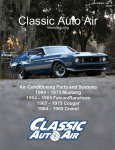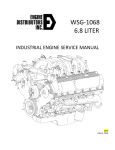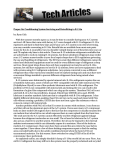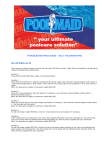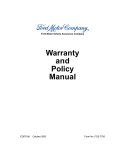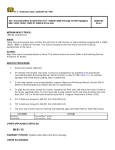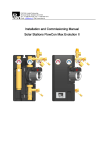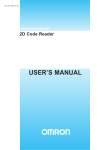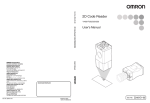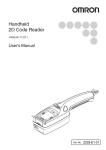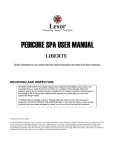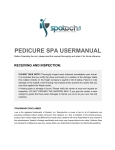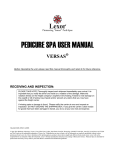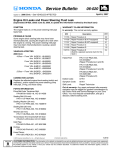Download CLIMATE CONTROL—A/C SERVICE TECH TIPS
Transcript
CLIMATE CONTROL—A/C SERVICE TECH TIPS FORD: 1992-1997 1992-2003 1995-2000 2000-2003 2002-2003 1995-2003 1997-2003 1999-2003 2000-2003 2001-2003 2000-2003 Article No. 02-20-8 THUNDERBIRD CROWN VICTORIA, ESCORT, MUSTANG, TAURUS CONTOUR FOCUS THUNDERBIRD WINDSTAR E SERIES, EXPEDITION, EXPLORER, F-150 SUPER DUTY F SERIES EXCURSION, EXPLORER SPORT TRAC, EXPLORER SPORT ESCAPE F-650, F-750 LINCOLN: 1992-2002 CONTINENTAL 1992-2003 TOWN CAR 1993-1998 MARK VIII 2000-2003 LS 1998-2003 NAVIGATOR 2002 BLACKWOOD 2003 AVIATOR MERCURY: 1992-1997 1992-1999 1992-2003 1995-2000 1999-2002 1993-2002 1997-2003 COUGAR TRACER GRAND MARQUIS, SABLE MYSTIQUE COUGAR VILLAGER MOUNTAINEER ISSUE ACTION The following A/C tech tips are to assist the technician with the proper procedures for servicing A/C systems. Refer to the following A/C System Service Tips and Procedures for service and repair guidelines. Copyright 2002 Ford Motor Company PAGE 1 Article No. 02-20-8 Cont’d. SERVICE INFORMATION The Clean Air Act of 1990 contains requirements that ban the release of refrigerants during the service, maintenance, and disposal of air conditioning and refrigeration equipment. Shops are required by law to use approved recovery or recycling equipment when servicing air conditioning systems. Also, the technicians must be certified in the proper use of the equipment. (Some state and local jurisdictions have adopted their own requirements for credentials, so check with your state and local authorities for details). The purpose of this article is to review: • No problem found (NPF) warranty claim charging process • Proper refrigerant charge/service valve diagnostics • Accumulator and orifice tube replacement guidelines • Leak detection dye addition recommendations • Refrigerant joint leak detection guidelines • Clarify the correct usage of refrigerant joint O-ring part numbers • Correct procedure for a refrigerant system flush 1. CHARGE & SERVICE VALVE DIAGNOSTICS • The high-pressure charge valve and low-pressure service valve are not absolutely perfect seals. Both valves may leak a very small amount of R134a refrigerant, less than 0.25 ounces per year, and still be within acceptable limits. • The high-pressure charge valves and low-pressure service valves should always be sealed with a finger torqued high-pressure charge cap or low-pressure service cap. The cap keeps the valve clean and is the final seal that ensures a leak tight refrigerant system that prevents the potential valve leaks of less than 0.25 ounces per year of R134a refrigerant from reaching the atmosphere. • When servicing the refrigerant system and initially untorquing the high pressure charge cap or low pressure service cap a short release (wisp) of R134a refrigerant may be seen or heard. In addition, fluorescent leak detection dye may be present within the valve stem of the high-pressure charge valve or low-pressure service valve. Neither a short release (wisp) of R134a refrigerant nor the presence of dye in the valve stem is an indicator that the high-pressure charge valve or low-pressure service valve failed. Since the caps are the final seal, if the valve leaks even a very small amount the R134a refrigerant pressure and leak detection dye will build up under the cap and hence the R134a refrigerant release (wisp) and/or presence of leak detection dye when the cap is removed. • The correct procedure to employ when diagnosing a suspected high pressure charge valve or low pressure service valve is as follows: a. Blow out the valve with dry shop air to clear any refrigerant and dye. b. Point an electronic refrigerant leak detector into the valve stem to determine if the leak rate is greater than 0.25 ounces per year (only the Rotunda approved electronic leak detector should be used). If the leak rate is greater than 0.25 ounces per year, replace the valve. If the leak rate is less than 0.25 ounces per year, the valve is good. PAGE 2 Article No. 02-20-8 Cont’d. c. If a Rotunda-approved electronic refrigerant leak detector is not available, inspect the valve for the presence of dye using a Rotunda-approved ultraviolet black light. If no dye is visible using the ultraviolet black light, assume that the valve is not faulty. 2. ACCUMULATOR & ORIFICE TUBE REPLACEMENTS • R134a refrigerant systems are much more tolerant to moisture than the previous R12 refrigerant systems. The only time that an accumulator or orifice tube should be replaced is if there is a catastrophic failure of the compressor or if a non-repairable accumulator failure is leaking refrigerant. There is no need to replace the accumulator or orifice tube if replacing a refrigerant system component (hose, evaporator, condenser, refrigerant switches, O-rings, charge or service valves or non catastrophic compressor failure). • Orifice tubes should be checked for: a. Orifice tube presence. b. Correct size. c. Correct orientation. d. Debris on the filter. • If more than 75% of the filter screen is clogged with debris, the orifice tube can be replaced. Tests have shown that A/C performance does not degrade until more than 90% of the screen area is totally blocked. 3. LEAK DETECTION DYE ADDITION Definitions: • Polyalkylene Glycol (PAG) Refrigerant Compressor Oil: A product necessary to maintain compressor lubricity within a refrigerant system. The PAG refrigerant compressor oil circulates throughout the entire refrigerant system and is transported under pressure by the flowing refrigerant. • Use only a Ford-approved PAG refrigerant compressor oil meeting the appropriate Ford specification. Refer to the vehicle’s Workshop Manual or Owner’s Guide to determine the correct product that should be used. Most, but not all, vehicles equipped with R134a refrigerant require the use of Motorcraft PAG Refrigerant Compressor Oil, service part number YN-12-C, meeting Ford specification WSH-M1C231-B. No other compressor oil or refrigerant stop leak should be used, even if it has an OEM recommendation on the label, as use of non-approved products may reduce system capability or cause system damage. • Fluorescent Refrigerant Leak-Detection Dye: A product used in conjunction with a Rotunda-approved ultraviolet black light to detect refrigerant leaks. In production, fluorescent refrigerant dye is added to the refrigerant system via a dye “wafer” located within the desiccant bag inside the accumulator or receiver-dryer. The dye binds to the refrigerant compressor oil and is transported with the compressor oil throughout the refrigerant system. The dye contains chemical elements that fluoresce (glow) when excited with the use of a Rotunda-approved ultraviolet black light. The presence of the glow may indicate a possible refrigerant leak. In addition, all service accumulators and receiver-dryers are shipped with a fluorescent dye wafer already present within the internal desiccant bag. When replacing an accumulator, it may take up to 30 minutes of continuous A/C operation to liquefy and distribute the dye throughout the refrigerant system. It may take many days for the dye to leach out of a very small leak and become visible by black light. • Fluorescent Refrigerant Dye Overdose: A refrigerant system can become overdosed with fluorescent refrigerant dye. More than three applications of fluorescent refrigerant dye in a refrigerant system can negatively impact the lubricity of the PAG refrigerant compressor oil and the durability of the compressor. PAGE 3 Article No. 02-20-8 Cont’d. • Since 1995, all North American-built Ford Motor Company vehicles have been equipped with a fluorescent refrigerant dye. There is no need to add additional fluorescent refrigerant dye when diagnosing a possible refrigerant leak. The following six leak detection symptoms, technical concerns, and responses will address the most common scenarios possible when diagnosing refrigerant leaks. (1) Question: Because oil and refrigerant were added, is there a need to add dye too? (2) Response: No. When a refrigerant system flush is performed, the accumulator/receiver-dryer is replaced due to desiccant contamination. The new service accumulator/receiver-dryer has fluorescent refrigerant dye contained within the internal desiccant bag. It may take up to 30 minutes of continuous A/C operation to liquefy and distribute the dye throughout the refrigerant system. No additional dye is necessary. Adding more fluorescent refrigerant dye may lead to dye overdosing. a. SYMPTOM - Poor A/C performance (1) Question: Does dye need to be added to look for leaks? (2) Response: No. Every Ford refrigerant system built since 1995 is equipped with fluorescent leak detection dye. Adding more dye may lead to dye overdosing. b. SYMPTOM - Low Charge or no charge (1) Question: If R134a refrigerant is added, should more dye be added too? (2) Response: No. When adding refrigerant, there is no need to add fluorescent refrigerant dye. Nearly 100% of the dye remains in the system dissolved in the refrigerant compressor oil. Adding more dye may lead to dye overdosing. c. SYMPTOM - Refrigerant component replacement (e.g., compressor, condenser, evaporator, hose or tube assembly, accumulator, receiver-dryer, TXV, orifice tube). (1) Question: If oil in refrigerant were added, should dye be added too? (2) Response: No. Component replacement is an “oil match” operation. Not all of the system oil is lost when replacing a component (usually 1/2 to 3 oz.). The original production concentration of dye will absorb this additional oil. No additional fluorescent refrigerant dye is necessary. d. SYMPTOM - Flushed the refrigerant system PAGE 4 e. SYMPTOM - Removed or replaced the engine or transmission. (1) Question: The refrigerant system was opened to allow for the repair. Refrigerant was added. Should dye also be added? (2) Response: No. When adding R134a refrigerant, there is no need to add fluorescent refrigerant dye. Nearly 100% of the dye will still be in the system dissolved in the refrigerant compressor oil. Adding more fluorescent refrigerant dye may lead to dye overdosing. f. SYMPTOM - Added a significant amount of refrigerant oil. (1) Question: It is necessary to add refrigerant oil because of a fitting separation, hose rupture, component damage from road debris, etc. Does dye need to be added? (2) Response: Yes - 1 1/4 ounces of Rotunda approved fluorescent R-134a refrigerant leak detection dye may be added, but only if more than 50% of the system’s oil capacity had to be replaced and the accumulator/receiver dryer was not replaced. Article No. 02-20-8 Cont’d. 4. 5. REFRIGERANT JOINT (FITTINGS) LEAK DIAGNOSTICS • There are two primary leak detection tools available to assist in the leak diagnosis of refrigerant joints or fittings: 1) fluorescent leak detection dye with the use of a Rotunda-approved ultraviolet black light or 2) an electronic refrigerant leak detector. When diagnosing leaks in refrigerant components, either leak detection tool is acceptable; however, diagnosis using the fluorescent dye method is preferred and is typically more reliable. • Under no circumstances should a refrigerant joint be diagnosed as leaking with only a visual indication of oil at the joint. Refrigerant compressor oil is used on every refrigerant joint to aid in assembly at the vehicle assembly plant. This assembly refrigerant oil can leach out in normal vehicle operating conditions and begin to collect dirt, and dust, incorrectly appearing to be a leaking joint. A joint with evidence of oil, dust, and dirt may be a perfectly leak-free joint. Until the presence of a refrigerant leak is verified using a Rotunda-approved ultraviolet black light or electronic refrigerant leak detector, the joint should not be disassembled and repaired. Do not replace O-rings on joints as a preventative maintenance measure. If dye is added to the system with a new accumulator, it may take several days for the dye to leach out of the leak and become visible by black light. REFRIGERANT JOINT O-RING PART NUMBERS • The previously claimed refrigerant O-ring base part numbers 19700, 19B596 and 19D690 are not legitimate part numbers or O-ring kit part numbers for any model year 1994 or forward vehicle. Each refrigerant joint has a specific individual O-ring associated with it. Please reference the following list for the correct part numbers, available from Ford (FCSD). When entering the O-ring part number in the claim, enter the entire part number, including the prefix and suffix. The dealer may exhaust current O-ring parts inventory and charge the O-rings to 19E889. A/C O-RING PART CHART Service Part Number O-Ring Color O-Ring Size 1W1Z-19E889-EA Dark Blue 0.375 1W1Z-19E889-LA Dark Red 1W1Z-19E889-HA Dark Blue 0.344 0.375 1W1Z-19E889-HA Dark Blue 0.375 1W1Z-19E889-JA Dark Blue 0.500 1W1Z-19E889-GA Dark Blue 0.625 1W1Z-19E889-KA Dark Blue 0.750 1W1Z-19E889-AA 1W1Z-19E889-BA 1W1Z-19E889-CA 1W1Z-19E889-DA 1F1H-19E889-AA, or N806959-S, or W704589-S300 0.375 0.500 0.625 0.750 0.797 6. Orange Orange Orange Orange Green Refrigerant Joint Type Pressure Relief Valve (PRV) Clutch Cycling Switch Refrigerant Containment or Dual Function Switch Spring Lock Coupling (SLC) or Tube-O Spring Lock Coupling (SLC) or Tube-O Spring Lock Coupling (SLC) or Tube-O Spring Lock Coupling (SLC) or Tube-O P-Nut P-Nut P-Nut P-Nut Compressor Manifold CLIMATE CONTROL “NO PROBLEM FOUND” (NPF) PART NUMBER • The correct causal part number for a Climate Control “No Problem Found (NPF)” is NPF. The labor operation is “NPF”, which cannot exceed 2.5 hours. The Customer Concern Codes (CCC) range from C01 through C20 and C24. The Condition Code (CC) is 82 for Freight/Postage/Maintenance. When diagnosing a climate control system warranty issue, this combination of the NPF causal part, NPF labor operation, CCC and CC will allow the technician to claim for Climate Control “No Problem Found” related work. See the ACESII User Manual for further details. PAGE 5 Article No. 02-20-8 Cont’d. 7. REFRIGERANT SYSTEM FLUSH GUIDELINES • The refrigerant system should only be flushed for two reasons: 1) Catastrophic compressor failure or 2) Catastrophic accumulator failure involving a ruptured desiccant bag. Use Ford A/C System Flushing Solvent, part F4AZ-19579-A. • If the system is flushed due to one of the two above-noted reasons, the accumulator and orifice should be replaced and the correct amount of PAG refrigerant compressor oil should be added. Do not add dye since it is contained within the replacement accumulator. Use only a Ford-approved PAG refrigerant compressor oil meeting the appropriate Ford specification. Refer to the vehicle’s Workshop Manual or Owner’s Guide to determine the correct product that should be used. Most, but not all, vehicles equipped with R134a refrigerant require the use of Motorcraft PAG Refrigerant Compressor Oil, service part number YN-12-C, meeting Ford specification WSH-M1C231-B. No other compressor oil or refrigerant stop leak should be used, even if it has an OEM recommendation on the label, as use of non-approved products may reduce system capability or cause system damage. • There is no need to flush a refrigerant system if refrigerant contaminants, such as any non-R134a refrigerant, are detected during a refrigerant identifier test. The contaminated refrigerant should be collected and the refrigerant system should be recharged with R134a. PART NUMBER YN-12-C F4AZ-19579-A YN-19 1W1Z-19E889-EA 1W1Z-19E889-LA 1W1Z-19E889-HA 1W1Z-19E889-JA 1W1Z-19E889-GA 1W1Z-19E889-KA 1W1Z-19E889-AA 1W1Z-19E889-BA 1W1Z-19E889-CA 1W1Z-19E889-DA PART NAME PAG Refrigerant Oil A/C System Flushing Solvent R-134a Refrigerant A/C O-Ring A/C O-Ring A/C O-Ring A/C O-Ring A/C O-Ring A/C O-Ring A/C O-Ring A/C O-Ring A/C O-Ring A/C O-Ring OTHER APPLICABLE ARTICLES: NONE WARRANTY STATUS: INFORMATION ONLY OASIS CODES: 208000, 208200, 208999, 290000 NOTE: The information in Technical Service Bulletins is intended for use by trained, professional technicians with the knowledge, tools, and equipment to do the job properly and safely. It informs these technicians of conditions that may occur on some vehicles, or provides information that could assist in proper vehicle service. The procedures should not be performed by “do-it-yourselfers”. Do not assume that a condition described affects your car or truck. Contact a Ford, Lincoln, or Mercury dealership to determine whether the Bulletin applies to your vehicle. PAGE 6






